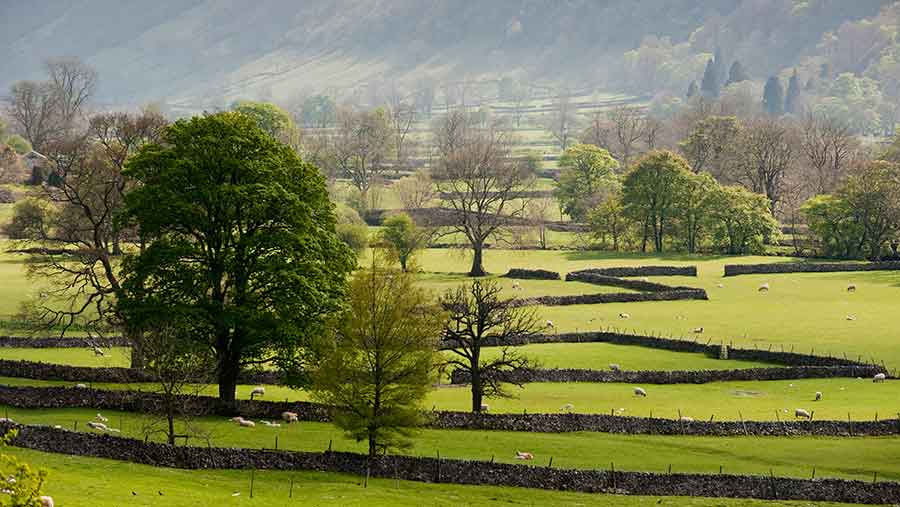Opinion: Defra should not put farmers off planting trees

© John Eveson/FLPA / imageBROKER/REX/Shutterstock
‘‘Pens down, stop writing,” the invigilator used to shout at the end of our school exams. See-sawing emotions of panic, relief, elation and fear would wash over me.
At midnight on Monday it all came flooding back to me. The Basic Payment Scheme deadline had struck. My online form was submitted and my BPS destiny in the hands of the RPA. How would the “examiner” interpret my answers?
Were the four decimal places I “guessed” for my parcel hectarages the same as theirs? Should my beautiful wildflower field corners be coded FA1 when they weren’t fallow? Was my line of trees ineligible or were they far enough apart not to be “a line”?
It wasn’t all bad – I cross-checked all of our cross-compliance duties and it gave us a gentle reminder to make sure our stewardship management is up to date. However, on the downside, it drew attention to some of its ridiculous restrictions; none more so than the way the BPS rules discriminate against trees.
Indeed, if I were a tree, not only would I feel discriminated against, but I would also object to the arbitrary nature of the rules surrounding my planting. The flakiness of the rules positively promotes further discrimination by farmers and land managers.
See also: Read more of Ian Pigott’s columns
So, in a nutshell, this is how the RPA regard my existence…
 Ian Pigott farms 700ha in Hertfordshire. The farm is a Leaf demonstration unit. Ian is also the founder of Open Farm Sunday.
Ian Pigott farms 700ha in Hertfordshire. The farm is a Leaf demonstration unit. Ian is also the founder of Open Farm Sunday.I can stand eligibly in a field corner providing I don’t have too many friends with me (no more than 100 trees a hectare).
But I am deemed ineligible if I am in a line with my fellow trees between fields (shelter belts are excluded).
However, beetle banks (tussocky grasses) are allowed in the middle of or between fields because they offer an excellent habitat for a lot of invertebrates. But so do we.
Note to Defra – when we stand in a line, I propose we rebrand ourselves pollinator tree belts.
The prejudice against me does not start and stop on the field boundary. I am accepted if I loiter in a field, higgledy piggledy (“scattered within an agricultural parcel, providing each tree is surrounded by agricultural land”), but if I file an orderly queue (midfield) as my European friends are allowed, I am ineligible.
This is because, although agriforestry (alley cropping) is regarded as a forward-thinking farming system in Europe and North and South America, it is not recognised under Pillar two in England.
So, I think the tree has every right to feel discriminated against.
Many farmers, myself included, should be planting more trees, so why aren’t we? One reason is a lack of education that creates confusion.
Farmers are resistant to learning more about the benefits trees can offer because of the mixed messages. The result is that most decide it is easier not to plant trees than fall foul of the rules.
Of course there are other factors at work. The permanency of trees does not sit comfortably with everyone. Shorter-term environmental options require less emotional commitment.
There is also a historic negative legacy that includes the tree’s effect on land values, who owns the land and how they interfere with farming activities.
But my research has shown the adoption of precision agriculture allows the environmental and economic merits of tree belts and alley farming through improved water management and biodiversity to be a valid consideration for all.
It is ridiculous to think we are bound by a farming policy that does not actively promote their existence. It is time Defra helped farmers to see the wood for the trees.
